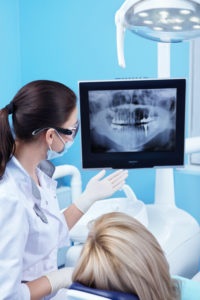Having an affordable anesthesia provider come to your office has many benefits, attracting more patients, reduce liability for the office, and increase safety. Last week’s blog we talked about how more and more patients are gravitating to dental offices that offer a higher level of sedation, due to their fear and anxiety
 “There are significant benefits for dentists developing a relationship with an anesthesia group. Offering your patients IV sedation is a powerful marketing tool – and having a relationship in place means you can offer this service in an efficient way with minimal interruption to other service lines. Sedated patients are nearly always satisfied patients who in-turn share with their family and friends what type of experience they had in your office. Finally, a separate professional administering the anesthetic provides not only a the dentist protection from liability for anesthesia outcomes, but another team member who is focused on the safety and positive experience of your patient,” excerpts taken from Inscriptions, the official publication of the Arizona Dental Association
“There are significant benefits for dentists developing a relationship with an anesthesia group. Offering your patients IV sedation is a powerful marketing tool – and having a relationship in place means you can offer this service in an efficient way with minimal interruption to other service lines. Sedated patients are nearly always satisfied patients who in-turn share with their family and friends what type of experience they had in your office. Finally, a separate professional administering the anesthetic provides not only a the dentist protection from liability for anesthesia outcomes, but another team member who is focused on the safety and positive experience of your patient,” excerpts taken from Inscriptions, the official publication of the Arizona Dental Association
Bringing safe sedation into your office utilizes minimal resources, attracts patients, and drives up referrals. Partnering with an anesthesia provers is a win-win situation, by increasing the number of patients with the liability protection of an insured and licensed provider administering the sedation.
But many dentists are concerned with how it will affect the flow of their office. Having a certified registered nurse anesthetist in the officer utilizes minimal resources and very little disruption to the office.
Inscriptions goes on to say:
IV sedation and general anesthesia, as intimidating as they may seem, does not have to disturb the normal flow of the dental office, however some modifications must be made from non-sedation cases. Dentists should allow additional time for pre-operative and post-operative recovery, especially in the instance of using one operatory for the surgery and recovery. Your anesthesia provider must know the details of the procedure to efficiently and skillfully administer the anesthetic, so communication is paramount for safety. Putting the “sedation lineup” in a room that is further away from patients coming in for routine care keeps the case out of sight for your other patients. I also suggest asking your anesthesia provider to keep the volume of their monitors and alarms to a minimum. Many patients report a feeling of anxiety when they hear alarms, as media portrayals of anesthesia give them the idea a sedated patient is in critical condition. Although monitors and alarms need to be audible, especially the high (indicating oxygen saturation within normal limits) or low (oxygen saturation below acceptable levels, needing immediate intervention) tones of the pulse oximeter – none of these tones need to be so loud that they disturb the entire office.


